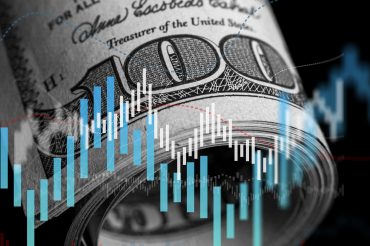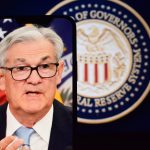
Fed Proposes Major Cut to Wall Street Bank Capital Requirements
6 minute read

Federal regulators propose easing Wall Street capital rules to boost Treasury market liquidity and lending flexibility
Key Takeaways
- Major capital requirement overhaul proposed by the Federal Reserve and OCC, with FDIC vote pending by three federal regulators to reduce how much capital the largest U.S. banks must hold against investments, marking the most significant potential Wall Street rule change under the Trump administration.
-
Supplementary Leverage Ratio modification would replace the current additional 2–3% capital requirement for big banks with half of their existing size-based surcharge, potentially reducing requirements from 2% to as low as 0.5% for some institutions.
- Fed leadership split on approval with Chair Jerome Powell and Trump appointees supporting the proposal while two officials voted against, citing increased systemic risk and potential for bank failures.
Introduction
Federal regulators take aim at a cornerstone of post-financial crisis banking rules, proposing to ease capital requirements that have governed Wall Street’s largest institutions for a decade. The Federal Reserve, Federal Deposit Insurance Corporation, and Office of the Comptroller of the Currency jointly unveiled the proposal Wednesday, targeting the enhanced Supplementary Leverage Ratio (eSLR) established in 2014.
The move represents the Trump administration’s most ambitious attempt to reshape banking regulation. Big banks argue the current requirements discourage them from holding safe assets like U.S. Treasury bonds, limiting their ability to support government debt markets during stress periods.
Key Developments
The proposal centers on modifying how banks calculate capital requirements against their total assets. Under current rules, all banks must hold 3% of capital against assets, while the largest institutions face an additional 2% buffer through the Supplementary Leverage Ratio.
The new framework would eliminate the current 2–3% fixed surcharge, replacing it with half of each bank’s GSIB capital surcharge. Since these surcharges range from 1% to 3.5%, the resulting add-on would span 0.5% to 1.75%, leading to a total leverage ratio requirement of approximately 3.5% to 4.25%.
Treasury Secretary Scott Bessent endorsed the change last month, stating it would encourage banks to increase Treasury holdings and apply downward pressure on interest rates. The banking industry has lobbied extensively against the leverage ratio, claiming it treats low-risk government bonds the same as high-risk investments.
Market Impact
Banking stocks respond positively to deregulation signals, with major financial institutions positioned to benefit from reduced capital constraints. The proposal arrives amid broader market expectations for regulatory rollbacks across the financial sector.
The leverage ratio change could free up significant capital for lending and investment activities. Banks have argued that current requirements force them to hold excessive reserves against Treasury securities, limiting their market-making capabilities during periods of government debt volatility.
Strategic Insights
The proposal marks a clear reversal from the regulatory tightening that followed the 2008 financial crisis. Large banks emerge as primary beneficiaries, gaining flexibility to deploy capital more aggressively while maintaining lower safety buffers.
Greg Baer, CEO of the Bank Policy Institute, argues that “penalising banks for holding low-risk assets like Treasuries undermines their ability to support market liquidity during times of stress when it is most needed.” This perspective reflects industry concerns about regulatory constraints limiting their role in government debt markets.
The timing aligns with the Trump administration’s broader deregulation agenda, including the Consumer Financial Protection Bureau’s recent decision to rescind 67 policy documents. Banks gain operational flexibility while regulators signal a shift toward market-friendly policies.
Expert Opinions and Data
Fed officials split along ideological lines regarding the proposal’s merits. Michelle Bowman, the Fed’s vice chair for supervision, describes the current requirement as “a binding constraint” rather than its intended backstop function, potentially reducing banks’ participation in Treasury market intermediation.
Fed Chair Jerome Powell supports advancing the proposal, noting that “conditions have changed” since the requirement’s adoption. Fellow Fed governor Christopher Waller, also a Trump appointee, emphasizes that “the leverage ratio treats a Treasury bond the same as a junk bond,” despite their vastly different risk profiles.
Opposition comes from Biden-appointed officials and international experts. Fed governor Adriana Kugler warns the proposal “will increase systemic risk in a manner not justified by the benefits cited.” Michael Barr, Bowman’s predecessor, states the change “would significantly increase the risk” of major bank failures.
Nicolas Véron from the Peterson Institute for International Economics cautions that “given the state of the world, there are all kinds of risks out there—it doesn’t sound like the right time to relax capital standards at all.”
Conclusion
The proposal enters a public comment period before potential finalization, with banking industry groups expected to provide strong support while consumer advocates and some economists raise systemic risk concerns. The measure represents the most significant banking deregulation effort since Trump’s return to office.
Fed leadership remains divided on the initiative’s wisdom, reflecting broader disagreements about appropriate capital levels for systemically important institutions. The proposal’s ultimate fate depends on regulatory approval processes and potential legal challenges from groups opposing the changes.








